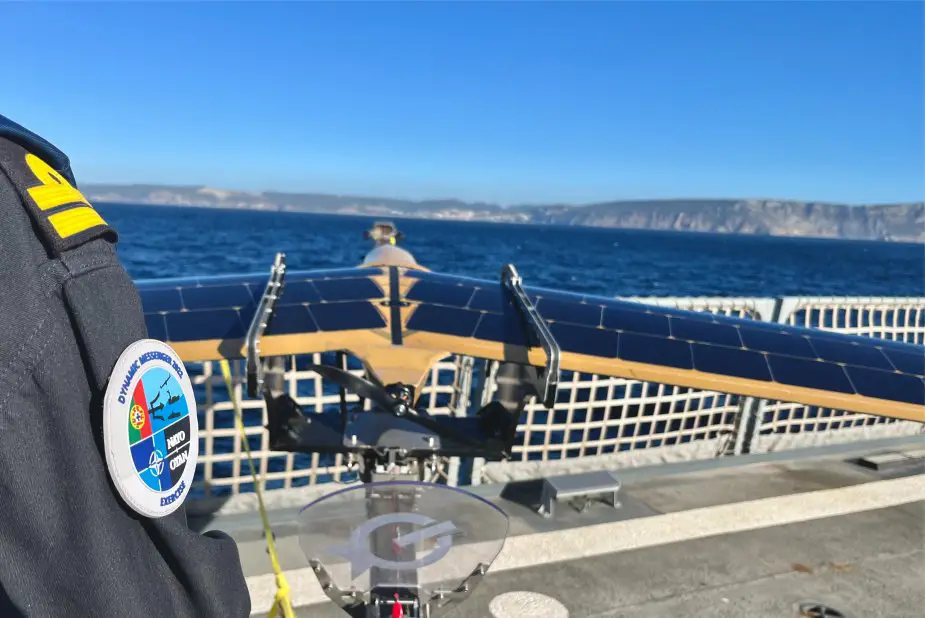Breaking news
Spanish OPV Audaz successfully operates Airfox UAV during NATO exercise.
According to a tweet published by SNMG1 on September 28, 2022, the Spanish Navy's Offshore Patrol Vessel SPS Audaz participated in the NATO exercise Dynamic Messenger. The Navy successfully used the Airfox Unmanned Aerial Vehicle (UAV) for intelligence, surveillance, and reconnaissance.
Follow Navy Recognition on Google News at this link
 Airfox Unmanned Aerial Vehicle on Spanish Meteoro class OPV Audaz. (Picture source: NATO)
Airfox Unmanned Aerial Vehicle on Spanish Meteoro class OPV Audaz. (Picture source: NATO)
Audaz (P-45) is an offshore patrol vessel and the fifth of the Meteoro class created for the Spanish Navy. It is the fourth Navy ship to carry this name. The patrol vessel was built in Navantia's shipyard in San Fernando.
The ship was laid down on April 29, 2016 and launched on March 30, 2017 at the San Fernando shipyard. The operational tests were done between the 15 and 21 of May 2018. The ship was commissioned on July 27, 2018.
The Meteoro-class offshore patrol vessel, also known as Buque de Acción Marítima (BAM), are new modular offshore patrol vessels of the Spanish Navy adapted to different purposes from a common base, manufactured by Navantia.
The main mission of the OPVs is Maritime Interdiction Operations (MIO), which are those aimed at imposing a ban on the transit of people and goods within a defined geographical area, and which normally consist of the interception and, if necessary, the boarding of ships to verify their cargo, all in support of economic or military sanctions that have been previously imposed.
The offshore patrol vessels will have a length of 93.9 m (308 ft), a beam of 14.2 m (47 ft), and a draft of 4.2 m (14 ft). They can reach a top speed of 20 knots (37 km/h; 23 mph).
The Audaz Offshore Patrol Vessel's crew consists of 48 people, of which 6 are officers, 10 are non-commissioned officers, and 32 sailors. Of the total, 2 are women.
About the Airfox Unmanned Aerial Vehicle
The UAV has a range of up to 10 hours, a range of 18 nautical miles, a maximum take-off weight of 4 kg, take-off and landing capability on a moving ship as well as on land and a zero carbon footprint.
It has electric propulsion with recharging by solar panels on the wings, reaches a maximum speed of up to 45 knots, with real wind limit for operation of up to 20 knots, and a payload of a full HD video camera.



























